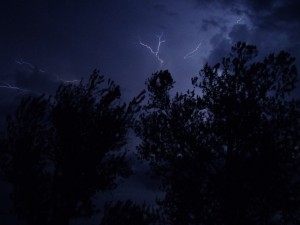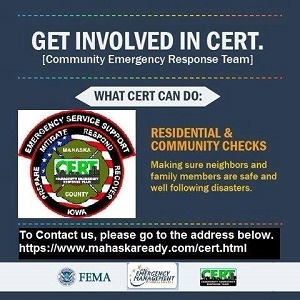Oskaloosa Storm Siren Policy
Severe weather is a fact of life in this part of the country.
With Saturday night’s storms came some damaging winds to portions of Mahaska County and Oskaloosa. At around 10:15 p.m. storm spotters in Beacon reported damage to mobile homes, and then shortly after that, reports of an aluminum outbuilding damaged were also reported prompting the sirens to be sounded.
I asked Oskaloosa Fire Chief Mark Neff about the policy for sounding the sirens in Oskaloosa in the event of severe weather.
The policy for the sounding of sirens in Oskaloosa is:
- A) “If there is a tornado warning and the path of the storm is going to direct affect the City of Oskaloosa.”
- B) “If a trained spotter feels that there’s damaging winds or hail, and the siren needs to be sounded, they have that authority to have the 911 Center sound those.”
Saturday evening’s storm is an example of the sirens being sounded from reports that were being called in from trained spotters. “It was not sounded because of the severe thunderstorm, it was sounded because a trained spotter thought it was necessary. The wind speeds were going to be strong enough that they sounded the sirens,” Neff said of the alert sirens that were sounded on Saturday evening.
“If they hear the sirens, it means there is something imminent going to happen,” Neff said of when sirens are sounded in Oskaloosa.
The policy was changed in February of 2009 because it was felt that the sirens were being sounded to often, and people were not paying enough attention to them at that time. “It worked the way it’s suppose to on Saturday,” Neff said about the alert given to the public.
“The National Weather Service relies on trained volunteers to supplement doppler radar information on severe storms and tornadoes. These dedicated individuals volunteer many hours of their time to learn about and detect severe weather. Their valuable cooperation is important in the warning process. Weather reports from trained spotters are used along with doppler radar data to issue warnings of tornadoes, severe thunderstorms, and flash floods.” – The National Weather Service
- These classes are free of charge and are open to anyone who has an interest in severe weather and/or public service. The objective of the training is to provide the knowledge to identify and report key severe weather features.
- The classes contain video footage of recent violent tornadoes, flash floods, hailstorms, and downbursts.
- The classes are about 2 to 3 hours in length. All course materials are provided, and a certificate of completion will be given at the end of each class.
















